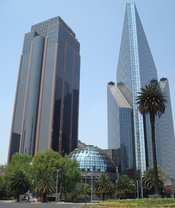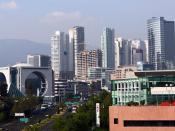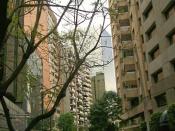Case Study of Urbanization in an LEDC:
Mexico City
*****
IB Geography Year 1
Mr. ******
October 20 2008�
Background: Mexico
Mexico, officially known as the United Mexican States, is a federal constitutional republic in the North American Continent. As the world's 15th largest country, Mexico covers nearly two million square kilometers of land. It is boarder by the United States to the north, the Pacific Ocean to the west, Guatemala, Belize, and the Caribbean Sea to the South, and the Gulf of Mexico to the east. With a population of 100 million according to the 2008 state-estimate, Mexico is the world's 11th largest nation by population and is the world's largest Spanish-speaking nation. Mexico City is the one of the world's most populous metropolitan area, and PricewaterhouseCoopers estimates that over 19.2 million people are living in Metropolitan Mexico. It is located in the Valley of Anáhuac at coordinates 19ð03 north and 99ð22 west and is bounded by the state of Hidalgo to the north, Mexico state to the west, Tlaxacala and Puebla to the east, and Morelos to the south.
Physically, it is surrounded by mountains on all four sides with only one small opening at the north. Mexico City is Mexico's strongest economic hub and is the world's eighth richest urban area with a Gross Domestic Product (at purchasing power parity) of $315 billion in 2005. Although Mexico City is home to some of the wealthiest people in the world and some areas have living standards resembling those of Germany and New Zealand, it is a newly industrialized city and there is an uneven distribution of wealth and security. Despite inequality and insecurity, thousands of Mexicans are still migrating to the capital annually in hopes of a better life, making Mexico city one of the fastest growing...


